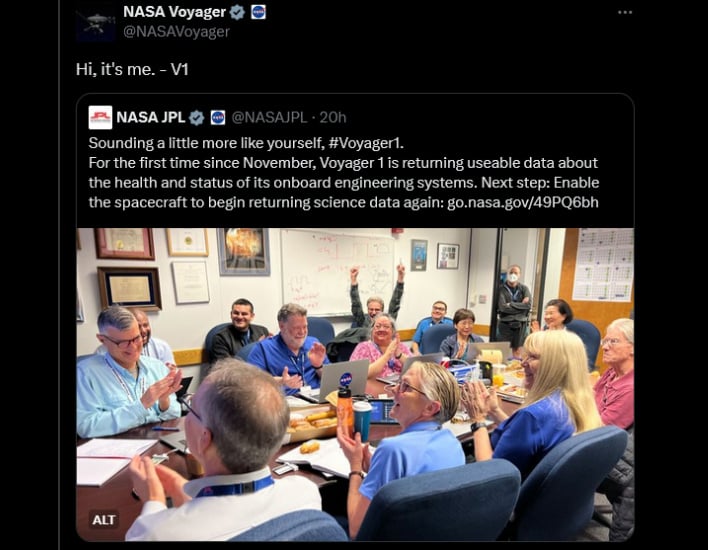Mystery Solved: NASA Fixes Voyager 1 Probe After Months Of Gibberish Chatter
The issue arose last November, when three of Voyager 1’s onboard computers, called the flight data system (FDS) stopped performing properly. While the spacecraft was receiving and executing commands sent from Earth, the FDS was not communicating properly with one of the probe’s subsystems, called the telemetry modulation unit (TMU). This caused Voyager 1 to be unable to send any science or engineering data back to the team on Earth.
What the team discovered was that a single chip responsible for storing a portion of the FDS memory is no longer operational. It is the loss of that code which caused the science and engineering data to become unusable. This created another problem due to the fact the team cannot repair the chip, and there is no single location large enough to store the section of code in its entirety.
The sleuths then changed their caps back to being engineers and came up with a plan to divide the affected code into sections and then store those sections in different places in the FDS. However, in order to make the new plan work, the team also needed to adjust those code sections to make sure that they all still function as a whole. They also had to update any references to the location of that code in other parts of the FDS memory.
Once the code had found its new home, the team was elated to find the solution had worked. The confirmation came on April 20, when for the first time in five months they could check the health and status of the spacecraft. To quote Matt Damon's character in The Martian, NASA's engineers essentially had to "science the s**t out of this" to fix Voyager 1.
However, the job is not done. NASA remarked that during the coming weeks, the team will move and adjust the other affected portions of the FDS software, which include the portions that will start returning science data.
It is amazing that both Voyager 1 and Voyager 2 are still sending back data after being launched in 1977. The twin spacecraft’s original mission was to explore Jupiter and Saturn, but went on to explore Uranus and Neptune as well. Now the duo are both on the Voyager Interstellar Mission (VIM), during which they will explore the outermost edge of the Sun’s domain, and beyond.


